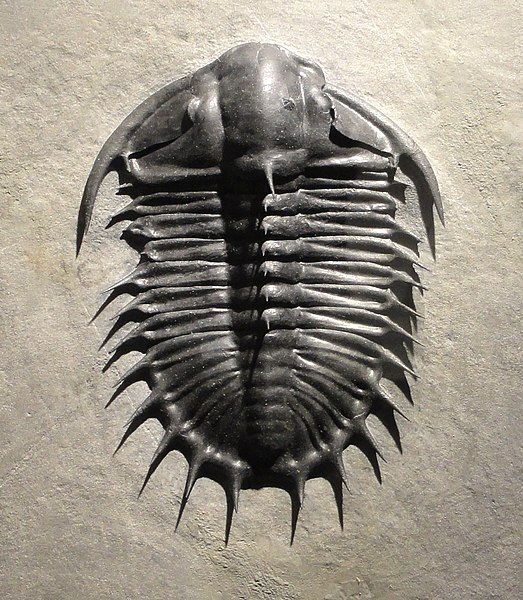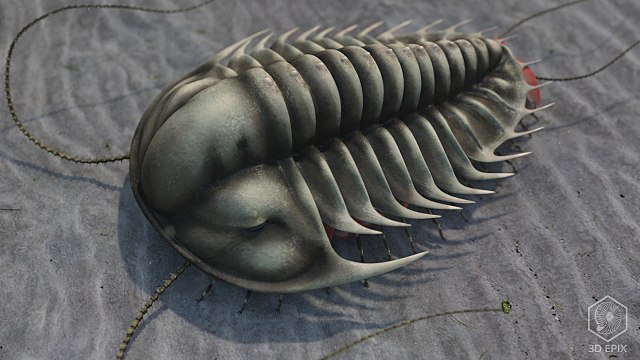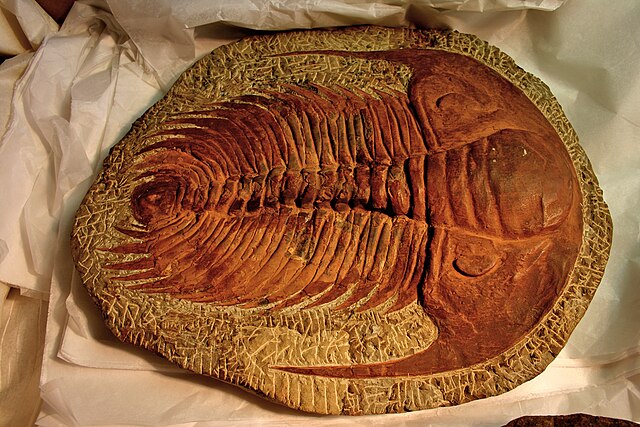Olenoides was a trilobite from the Cambrian period. Its fossils are found well-preserved in the Burgess Shale in Canada. It grew up to 10 cm long.
Image: Olenoides superbus, Late Middle Cambrian, Upper Marjum Formation, House Range, Millard County, Utah, USA Houston Museum of Natural Science DSC01415
Image: Olenoides serratus 3d
An exceptionally well preserved Olenoides serratus from the Burgess Shale. The antennae and legs are preserved as reflective carbon film
Trilobites are extinct marine arthropods that form the class Trilobita. Trilobites form one of the earliest known groups of arthropods. The first appearance of trilobites in the fossil record defines the base of the Atdabanian stage of the Early Cambrian period and they flourished throughout the lower Paleozoic before slipping into a long decline, when, during the Devonian, all trilobite orders except the Proetida died out. The last trilobites disappeared in the mass extinction at the end of the Permian about 251.9 million years ago. Trilobites were among the most successful of all early animals, existing in oceans for almost 270 million years, with over 22,000 species having been described.
Redlichiida, such as this Paradoxides, may represent the ancestral trilobites.
Fossil Prochuangia from the Cambrian period of Darnjal Formation, Tabas, Iran
Meroperix, from the Silurian of Wisconsin
Walliserops trifurcatus, from Jebel Oufatene mountain near Fezzou, Morocco







